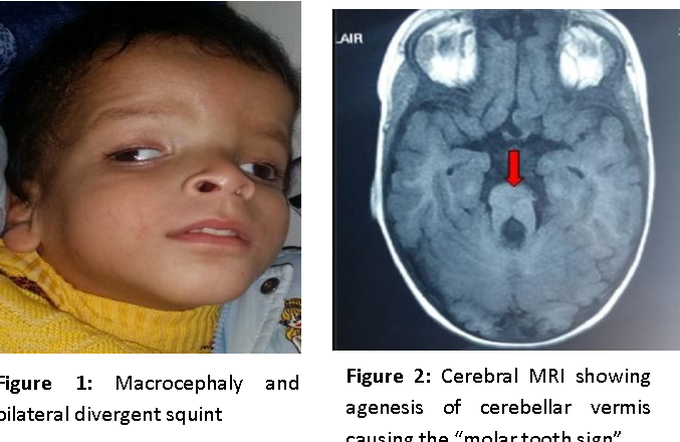


Joubert Syndrome: A Rare Developmental Disorder of Brain
Joubert Syndrome refers to hypoplastic cerebellar vermis and a malformed brainstem. These changes demonstrate a characteristic ‘molar tooth sign’ on MRI. Hypoplasia of cerebellar vermis manifests as impaired control of balance and coordination. At birth, the affected infants have decreased muscle tone. In early childhood, ataxia is seen. These children have an irregular pattern of breathing characterized by episodic increase and decrease in respiratory rate. The extra-ocular movements are often abnormal. Oculomotor apraxia is common. Intellectual disability is also present. individuals with Joubert Syndrome have characteristic facies: a broad forehead, ptosis, arched eyebrows, low-set ears, triangular shape of the mouth, and widely spaced eyes. Joubert Syndrome is strongly associated with mutations in the genes encoding proteins forming cilia. However, the pathway by which abnormal cilia is implicated in developmental disorder is not yet known. The pattern of transmission is autosomal recessive. Source https://rarediseases.info.nih.gov/diseases/6802/joubert-syndrome#:~:text=Joubert%20syndrome%20is%20disorder%20of,the%20brain%20and%20spinal%20cord). Image via https://www.semanticscholar.org/paper/The-management-of-Joubert-Syndrome-in-Physical-and-Sghir-Salah/b172e5fdd201799fd8f51e47102271d419cb2e7d/figure/0

